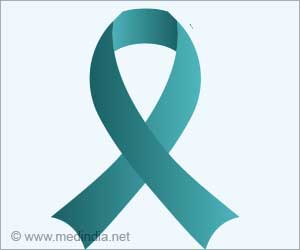Cervical cancer occurs in the cervix (the entrance to the uterus from the vagina) of a woman. Almost all cervical cancer cases (99%) are caused by infection with high-risk human papillomavirus (HPV), a virus spread through sexual contact. Although most HPV infections heal spontaneously with no symptoms, chronic infection can lead to cervical cancer in women.
January: Cervical Cancer Awareness Month
Cervical Cancer Awareness Month is observed every January. It is an excellent chance for the World Health Organization (WHO) and its partners to spread the word about cervical cancer and HPV vaccination. As the theme for Cervical Cancer Awareness Month this year, we are concentrating on abolishing cervical cancer within a few generations.
What is Cervical Cancer?
Cervical cancer is one of the most successfully treated types of cancer when found early and managed well. Late-stage cancers can also be controlled with adequate treatment and palliative care. We can eliminate cervical cancer as a public health problem within a few generations if we take a comprehensive strategy for prevention, screening, and treatment (1✔ ✔Trusted Source
Cervical Cancer Awareness Month 2023
Go to source
).
Objective of Cervical Cancer Awareness Month
-
Spread awareness:
Learn about cervical cancer and the human papillomavirus (HPV), which causes it. You can also help educate other women in your life.
-
Get yourself screened:
Cervical cancer screening normally begins around the age of 30 and is performed regularly.
-
Get vaccinated:
The HPV vaccine is administered in two doses, which should begin when a girl is between the ages of 9 and 14 years old.
Eliminate Cervical Cancer by 2030
To eliminate cervical cancer as a public health hazard by 2100, all countries must achieve and maintain an incidence rate of less than four new cases per 100,000 women each year. The achievement of the goal is dependent on three essential pillars and their accompanying targets (1✔ ✔Trusted Source
Cervical Cancer Awareness Month 2023
Go to source
):
-
Vaccination:
90% of girls are fully vaccinated against HPV by the age of 15.
-
Screening:
70% of women were screened with a high-performance test by the age of 35, and then again by the age of 45.
-
Treatment:
90% of women with pre-cancer were treated, and 90% of women with invasive cancer were managed.
To get on the path to eliminating cervical cancer by the end of the century, each country should reach the 90-70-90 targets by 2030.
Cervical Cancer Awareness Month occurs at a time when the world is still recovering from the COVID-19 pandemic, with significant delays to key health services. So, let us work together this month and beyond to rebuild healthier communities by enhancing access to the HPV vaccine, screening, treatment for cervical pre-cancer, and management of cervical cancer by 2030, and to eliminate cervical cancer within a few generations.
References :
- Cervical Cancer Awareness Month 2023 – (https://www.emro.who.int/noncommunicable-diseases/campaigns/cervical-cancer-awareness-month-2023.html)
- IARC marks Cervical Cancer Awareness Month 2023 – (https://www.iarc.who.int/featured-news/iarc-marks-cervical-cancer-awareness-month-2023/)
Source: Medindia



